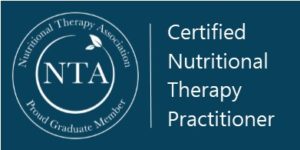 Take Action on FDA’s Proposed Food Safety Regulations
Take Action on FDA’s Proposed Food Safety Regulations
This week is your last chance to tell FDA what you think of its proposed food safety regulations!
The FDA’s proposed regulations pose significant problems for sustainable farmers and food producers across the country. Under the proposed regulations, many farmers will be unable to use traditional, sustainable growing practices. Food hubs and local food businesses will be forced to deal with costly and burdensome paperwork. And the FDA has undermined the Tester-Hagan exemption that we fought so hard for, placing even our smallest farmers at risk!
Below is information on how you can help, with sample comments to the FDA and more. To learn more about the proposed regulations, scroll to the end of this alert for an overview or visit www.westonaprice.org/legislative-updates/congress-flexes-new-muscles for a detailed analysis.
Take Action: Submit Comments to the FDA
DEADLINE: This Friday, November 15, 2013 is the deadline for submitting comments to FDA.
At the end of this alert is a sample letter on the FDA’s proposed rules, which you can use to create your own personalized comments.
Submit comments online:
- On-Farm Produce Rule:
www.regulations.gov/#!submitComment;D=FDA-2011-N-0921-0199
- Preventive Controls / HARPC Rule:
www.regulations.gov/#!submitComment;D=FDA-2011-N-0920-0188
Steps for submitting comments online:
- We recommend that you write your comment ahead of time and save it on your computer — there is a time limit when using the Federal Register System, and you may get timed out if you write your comment from scratch.
- If your comment is less than one page, you can copy and paste it into the comment box. If it is longer, you can instead write “see attached” and UPLOAD a separate document, such as a Word or PDF file, with your comments.
- Uncheck the box that says “I am submitting on behalf of a third party,” so that you do not have to enter an organization name.
- For category, select “individual consumer” or “private industry”
- Click “continue.”
- Check the box that you have read and understood the statement, and be sure to click “submit comment.” You should be taken to a new screen with a confirmation number.
- Remember that the Tester-Hagan provision is found in both rules, so if you file comments online, be sure to submit them on both rules.
Take Action #2
It is vital that your elected officials know what you think!
- Find out who represents you by going to www.house.gov and www.Senate.gov or by calling the Capitol Switchboard at 202-224-3121.
- Call and ask to speak to the staffer who handles agricultural issues. Explain that you’re a constituent and that high-quality food is very important to you.
- Ask your Congressman to do two things: (1) contact FDA directly on behalf of you and other constituents, and (2) support the Benishek Amendment, section 11321, in the House version of the Farm Bill.
- Get the staffer’s email address and follow up by sending them a copy of your comments to FDA.
SAMPLE COMMENTS
The italicized portions at the beginning are intended to help you personalize your comments. You don’t have to write a lot – even a couple of sentences can really increase the impact your comments will have!
Re: Preventive Controls Rule: FDA-2011-N-0920 and RIN 0910-AG36
Produce Standards Rule: FDA-2011-N-0921, and RIN 0910-AG35
I am a ______ [farmer, food producer, consumer, parent…]. I am deeply concerned about the impact that FDA’s proposed rules under FSMA would have on [my farm, my food business, the farms that I buy food from…].
For consumers, do you make an effort to buy from farms that use sustainable practices? Why do you care about these rules? Just a sentence or two is sufficient to explain.
If you are a farmer, explain your farm practices that would be impacted by the rule. Do you use manure, vermicompost, or compost teas? Do you use surface water or multiple different water sources? Do you do rotational grazing of your livestock with your crops, or use draft horses?
Do you have a CSA that involves more than one farm and would thus be required to do a HARPC plan? Do you do low-risk activities, such as bottling honey, grinding grains, or making jam? Do you have staff who could handle the HARPC paperwork or would you need to hire new people?
I urge the FDA to address the following issues in the proposed FSMA rules:
Tester-Hagan “qualified exemption” in both the Produce Rule and the Preventive Controls Rule:
- The gross sales test to qualify for the Tester-Hagan provision should be based on sales of food that is subject to FSMA, whether the produce standards or the preventive controls rule. Sales of food that would not be regulated under FSMA should not be included.
- The FDA should not rush the process of revoking a producer’s Tester-Hagan exemption. The agency has other mechanisms it can use if there is an immediate threat of foodborne illness.
a) The FDA should be held to specific evidentiary standards before it can revoke a farmer’s or food facility’s Tester-Hagan exemption.
b) A farm or facility that is exempt under Tester-Hagan should be given at least 90 days to submit evidence and defend its exemption if FDA seeks to revoke it.
c) If the exemption is revoked, the farm or facility should have at least two years to come into compliance with the FSMA rules.
On-farm Produce Standards Rule:
- The FDA’s approach to traditional farming methods, such as diversified livestock-crop farms, the use of working animals, and the use of biological soil amendments, is fundamentally flawed. The agency should not restrict these sustainable methods of farming without data showing an actual, verified increased rate of foodborne illness; the simple fact that these methods include diverse microbiological communities is not a sound scientific basis for restricting them.
- The waiting period between applying manure and harvesting the crop should be no more than 4 months, and there should be no waiting period between applying compost and harvesting the crop. The excellent track record for safety on organic farms shows that this standard is sufficient.
- Compost teas and other biological inoculants, including normal additives such as molasses, should be treated the same as compost.
- Water testing should not be required more often than once a month, and farmers should be able to test less frequently after establishing the safety of their water source through consecutive negative tests. In addition, farmers should be given the option to test for pathogens, rather than having to treat or stop using the water that tested positive for generic e. coli.
- The provisions on wildlife and domestic livestock need to be clarified to protect farmers who use biologically diverse farming from field inspectors using their discretion to require measures such as fencing or destruction of habitat.
Preventive Controls and HARPC Rule:
- “Very small facilities” should be defined as being under $1 million in total annual sales, adjusted for inflation. Imposing HARPC requirements on businesses smaller than that is unnecessary and overly burdensome.
- Any requirement for “supplier verification” should not prevent a facility from purchasing foods or ingredients from farms and facilities that are exempt from the regulations under the Tester-Hagan provision or other exemptions.
- Low-risk activities conducted by a farm using its own products or using another farms’ products, such as making jams, grinding grains, or dehydrating vegetables, should not be subject to any of these regulations, including both the HARPC requirements and the good manufacturing requirements. The exemption should apply regardless of the size of the farm.
- Low-risk activities, when conducted off-farm, should not be subject to the same requirements as high-risk processing activities. The requirements should address both the scale of the operations and the level of risk of the activity.
Sincerely,
Full Name
MORE INFORMATION
EXEMPTION FOR SMALL-SCALE PRODUCERS UNDER THREAT
Congress included a very important provision in the Food Safety Modernization Act to exempt small-scale, direct-marketing producers. Specifically, under the Tester-Hagan amendment, farmers and food producers who sell less than $500,000 annually, and who sell more than half of their products directly to consumers or local restaurants and retailers, are exempt from the new regulations.
But the FDA’s proposed regulations don’t fulfill the intent of the provision. First, the FDA wants to judge farmers’ sales based on all their sales, not just the food that is subject to FDA regulation. This means that many diversified farmers will be unable to qualify for the exemption, even if they are raising only small amounts of food that is covered by the law.
Second, the FDA wants to be able to revoke farmers’ and producers’ exemptions without respecting basic principles of fairness and due process. As proposed, the regulations:
- Leave too much discretion in the hands of individual FDA officials;
- Do not give small farmers and local food producers enough opportunity to respond to a decision to end their exemption; and
- Do not give small farmers and local food producers enough time to comply with the rules if their exemption is revoked.
In essence, this means that any farmer or producer targeted by the FDA for revocation of its exemption will almost certainly go out of business. The number of producers targeted this way by the FDA is likely to be small, but it will be devastating for those affected. And the uncertainty of not knowing who might be the agency’s next target will have a chilling effect on many small producers.
PROPOSED RULE #1: REGULATIONS ON HOW FARMS GROW PRODUCE
For farmers who don’t qualify for the Tester-Hagan exemption or whose exemption is revoked, the proposed produce safety regulations cover every aspect of growing and harvesting crops. Overall, the agency has taken a “guilty until proven innocent” approach to many traditional farming practices, forcing farmers to present scientific evidence in order to continue using farming methods that have been used for decades or even centuries.
Natural fertilizers:
Biological soil amendments are vital for farmers seeking to grow produce without synthetic chemicals, and they have an excellent track record for safety. But under the proposed regulations, a farmer would have to wait 6 weeks in between applying compost and harvesting the crop, making it much more difficult to use compost in many cases. A farmer using manure would be required to wait 9 months before harvest, effectively making it unusable for many farmers around the country.
FDA goes further and treats all of the following as if they were manure:
- Compost made without specific heating periods (“static compost”);
- Vermicompost or worm castings;
- Compost teas with any additives, even simple molasses or kelp meal;
- Any compost that does not meet the precise methods and testing requirements specified in the rule.
Applying any of these proven, valuable soil amendments would require the farmer to wait 9 months until harvest, essentially making them unusable. The practical effect of the proposed rule is to allow synthetic chemicals to be easily used, while making the use of many natural soil amendments difficult or even impossible for many farmers.
In contrast, the certified organic regulations have no waiting period in between applying compost and harvest, and only a 4-month waiting period between applying manure and harvest. Farmers have operated safely under the certified organic standards for over two decades, yet FDA’s proposed regulations would make it all but impossible for these farmers to continue farming as they have been.
Domestic livestock and wildlife:
FDA’s proposed regulations also require farmers to take steps to prevent contamination by domestic livestock or wildlife, but they leave out the specifics of what is required to the discretion of the field inspectors. It would be difficult to comply with a strict interpretation of the proposed requirements without taking measures such as fencing animals out and destroying wildlife habitat – essentially a “scorched earth” approach.
The combination of the animal and soil amendment requirements poses significant problems for diversified farms that raise both vegetables and animals. Diversified farms are efficient, both biologically and economically, yet they would be hard-pressed to comply with the proposed rules. At the least, it would be very expensive; in many cases, the farmers simply could not comply without changing their entire approach to farming.
Water requirements:
FDA’s proposed rule would require farmers to test their irrigation water every single week if they use a surface water source, such as a river or stock pond. If the water exceeds FDA’s standard for generic e. coli, the farmer would either have to treat it with chemicals or stop using it immediately. Yet generic e. coli is not a pathogen or disease causing organism. In other words, farmers will be forced to spend thousands of dollars testing for something that wouldn’t make a person sick, and then forced to either dump chemicals in the water or somehow find another water source based on these generic tests.
PROPOSED RULE #2: HAZARD ANALYSIS PLANS
FDA’s second rule, on Preventive Controls, deals with anyone who is handling or processing food. For producers who don’t qualify for the Tester-Hagan exemption or whose exemption is revoked, the Preventive Controls rule requires that any business that packs, holds, processes, or manufactures food creates a Hazard Analysis and Risk-based Preventive Control (HARPC) plan.
This encompasses a large number of low-risk activities that farms, food hubs, and cooperative produce distributors normally conduct. All of the following would be subject to the new requirements:
- A farm that dehydrates fruits, makes pickles, or mills grains;
- Two farms running a joint CSA and handling each other’s produce;
- A farm that stores food from any other farm or producer (even if they do no processing);
- All sorts of “food hubs” that distribute food from multiple local producers.
A producer subject to this rule must develop a HARPC plan. Developing such plans can cost thousands of dollars – up to $20,000 – for a small operation in the first year. The rule then requires annual “verification” that the plan is working, with records of this verification process and its findings, at continued significant expense.
The scope and complexity of the paperwork that will be required is daunting for both on-farm and off-farm processors. In the early 1990s, similar HACCP requirements led to many small- and mid-scale slaughterhouses having to shut their doors. The FDA’s proposed rule has the potential to put an end to many of the exciting innovations taking place right now with local food hubs, community processing facilities, and the other infrastructure so vital to re-establishing local food systems.
In addition, while not spelled out in the proposed rule, the references to “source verification” could easily lead to a requirement that all the producer’s sources be similarly regulated. In other words, a food hub or other regulated facility might not be able to purchase food or ingredients from farms and facilities that are exempt from some federal regulations — such as those protected by the Tester-Hagan exemption. The proposed regulation does not explicitly require this, but it does lay the foundation for such a step.







